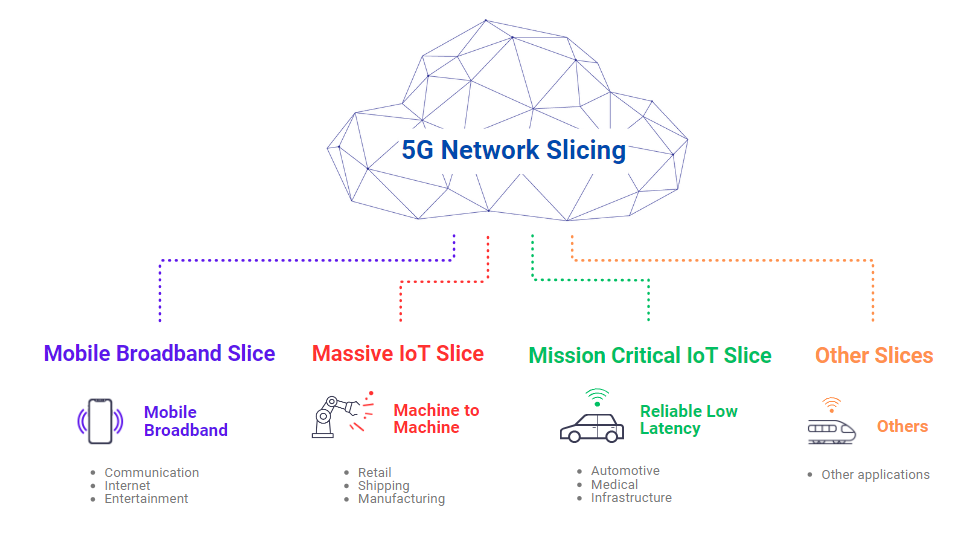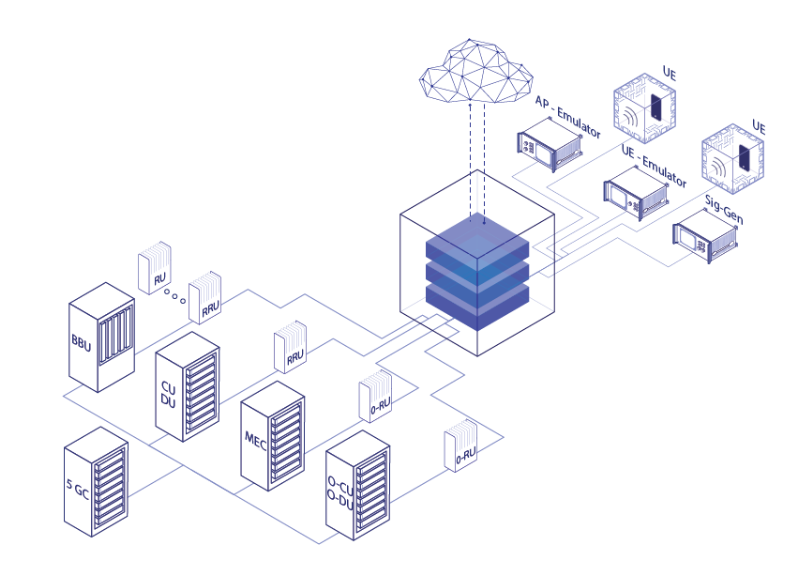Network Slicing brings revenue opportunities and testing challenges for operators

As an industry, the wireless sector has invested considerably in deploying 5G networks. The first investments were in 5G New Radio (NR) and now operators are starting to deploy 5G Standalone (SA). The focus now is leveraging those investments to provide new and innovative services for subscribers. One of the most promising features of 5G Standalone (SA) for delivering such capabilities and revenue is Network Slicing.
In prior generations of wireless networks, the infrastructure delivered a “one-size-fits-all” type of service to subscribers. Everyone had access to the same quality of service (data throughput and latency) and there was no practical way to deliver different grades of service to different users.
Network Slicing provides this capability. It creates logical partitions within the network infrastructure, with each partition tailored to meet the specific performance requirements of a specific user or group of users.
A different slice for everyone
For instance, a slice could be created to provide Fixed WIreless Access (FWA) services for Internet connectivity. A FWA slice would have increased throughput, perhaps delivered via Carrier Aggregation or traffic steering, to higher bandwidth carriers on a site.
A different slice could be created to serve a different purpose, such as mobile gaming or perhaps even autonomous vehicle control. This type of slice would likely be provisioned for very low latency as a primary attribute.
Slices may be persistent to serve a consistent need (like FWA / Internet connectivity), or a temporary one to provide specific capabilities for a limited duration in a defined area (such as priority for emergency services at an accident scene or extra capacity at a trade show or sporting event).
This flexibility gives the operator the ability to monetize their investment in 5G SA and charge the appropriate rate for each of these services.
Slicing is a testing challenge
Any operator who wishes to deploy a network slice will want to test it first. This is particularly true if they are charging a premium rate to deliver those services.
Slices require configuration changes to the entire network, from the core to various levels of RAN and radio access layers. Different slices may even require that certain network functions be executed at different locations within the network (I.e., in the network core or closer to the edge). Each of these configurations need to be tested.
Further, since different network slices are optimized for different performance, they may compete with one another for network resources (like CU, DU or even radio access). The operator will have to ensure that all combinations of slices can co-exist and that user experience on each slice is not negatively impacted by adjacent and / or competing slices.

If network slices are to be created on a temporary basis to serve transient user needs, the testing must be on demand. There is no luxury of a months-long testing and validation cycle, and testing must be performed at the speed of software.
Network slicing requires more and faster testing, and this increased complexity and demand will require a rethink of existing RF network testing processes.
RF testing at the speed of software
Acentury has identified this emerging challenge to RF lab operations and has designed our LAMTA system to address it. LAMTA is an RF Lab orchestration solution that enables wireless labs to save time, test more and get to market faster.
LAMTA controls RF signal distribution and attenuation. It automates test setup and tear-down processes, reducing time between tests from hours to minutes. It enables more complex testing scenarios which mirror the real world more closely, leading to higher confidence in test results and helps organize and streamline lab operations.

As wireless networks become more like IT networks, and service delivery becomes more agile, current testing processes will need to adapt. Zero-touch RF testing will become a necessity and not just an aspiration and LAMTA is a key enabler for that transition.
To learn more about our LAMTA product, click here.
Contact us if you have any further questions by reaching out to us here.
Related Articles
Application Note: Handover Testing Made Simple
How to Use Software Control to Automate RAN Testing for Advanced Mobility Scenarios and Log Analysis
Part 2: How CI/CD methodologies can be applied to 5G RAN Testing and Deployment
Have a question or comment?
We'd love to hear it. Fill out our General Inquiry Form or reach us directly at: info@acentury.co
CONTACT US